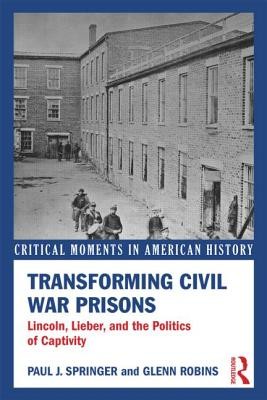
- We will send in 10–14 business days.
- Author: Paul J Springer
- Publisher: Routledge
- ISBN-10: 041583337X
- ISBN-13: 9780415833370
- Format: 15.2 x 22.6 x 1.3 cm, softcover
- Language: English
- SAVE -10% with code: EXTRA
Reviews
Description
During the Civil War, 410,000 people were held as prisoners of war on both sides. With resources strained by the unprecedented number of prisoners, conditions in overcrowded prison camps were dismal, and the death toll across Confederate and Union prisons reached 56,000 by the end of the war. In an attempt to improve prison conditions, President Lincoln issued General Orders 100, which would become the basis for future attempts to define the rights of prisoners, including the Geneva conventions. Meanwhile, stories of horrific prison experiences fueled political agendas on both sides, and would define the memory of the war, as each region worked aggressively to defend its prison record and to honor its own POWs.
Robins and Springer examine the experience, culture, and politics of captivity, including war crimes, disease, and the use of former prison sites as locations of historical memory. Transforming Civil War Prisons introduces students to an underappreciated yet crucial aspect of waging war and shows how the legacy of Civil War prisons remains with us today.
EXTRA 10 % discount with code: EXTRA
The promotion ends in 18d.15:21:04
The discount code is valid when purchasing from 10 €. Discounts do not stack.
- Author: Paul J Springer
- Publisher: Routledge
- ISBN-10: 041583337X
- ISBN-13: 9780415833370
- Format: 15.2 x 22.6 x 1.3 cm, softcover
- Language: English English
During the Civil War, 410,000 people were held as prisoners of war on both sides. With resources strained by the unprecedented number of prisoners, conditions in overcrowded prison camps were dismal, and the death toll across Confederate and Union prisons reached 56,000 by the end of the war. In an attempt to improve prison conditions, President Lincoln issued General Orders 100, which would become the basis for future attempts to define the rights of prisoners, including the Geneva conventions. Meanwhile, stories of horrific prison experiences fueled political agendas on both sides, and would define the memory of the war, as each region worked aggressively to defend its prison record and to honor its own POWs.
Robins and Springer examine the experience, culture, and politics of captivity, including war crimes, disease, and the use of former prison sites as locations of historical memory. Transforming Civil War Prisons introduces students to an underappreciated yet crucial aspect of waging war and shows how the legacy of Civil War prisons remains with us today.


Reviews